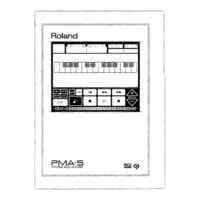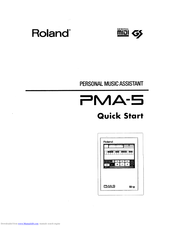Roland PMA-5 Manuals
Manuals and User Guides for Roland PMA-5. We have 2 Roland PMA-5 manuals available for free PDF download: Owner's Manual, Quick Start Manual
Roland PMA-5 Owner's Manual (145 pages)
personal music assistant
Brand: Roland
|
Category: Recording Equipment
|
Size: 9 MB
Table of Contents
Advertisement
Roland PMA-5 Quick Start Manual (45 pages)
Personal music assistant
Brand: Roland
|
Category: Recording Equipment
|
Size: 2 MB

